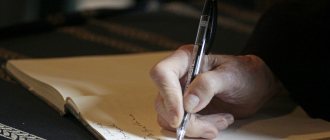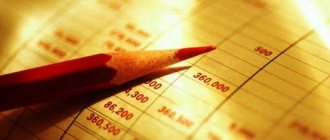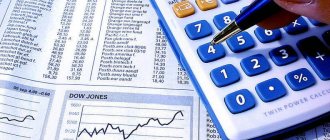What is the useful life of buildings and structures
Serious engineering communications, such as buildings and structures, as a rule, serve as fixed assets for a long time: years and decades. They slowly lose properties useful for use. But the concept of “long” is very vague. In each specific case, the useful life (USI) can vary greatly. How exactly to set this deadline and document it correctly, what points to pay attention to when regulating, read in this article.
Why determine SPI
Useful lives are established for adequate accounting purposes. But in accounting and tax accounting, the features of their establishment are different, since the goals are different:
- SPI for accounting. It is necessary in order to correctly determine the decrease in the value of a fixed asset and correctly calculate depreciation on it. PBU 6/01 in paragraph 20 says that the organization can set this period at its discretion, taking into account the following key parameters:
- how long it is planned to actively use the building or structure;
- what factors influence physical wear and tear in this particular case;
- what degree of wear is acceptable;
- Are there any special restrictions for a specific property (for example, staying in a rental, leasing, etc.).
- SPI for tax accounting . It is established to classify fixed assets according to the time of their useful operation (clause 1 of Article 258 of the Tax Code of the Russian Federation). For this purpose, all fixed assets are divided into groups, the composition of which is fixed in the classification table. This document was approved by the Government of Russia in Resolution No. 1 of January 1, 2002. The table shows codes according to the classifier adopted for fixed assets (OKOF) and the distribution of fixed assets by groups. For each group, a time range is established within which the SPI can be assigned for each asset (including “long-term” ones, such as buildings and structures).
This is important to know: Application for state cadastral registration of real estate
NOTE! When maintaining accounting records, it is convenient to use the Tax Classification to determine the SPI of real estate: in this case, the calculations will be the same, that is, depreciation deductions will be calculated at a minimum. But it is also possible to set a smaller SPI in accounting.
The method for determining SPI must be recorded in the accounting policies of the organization.
Third group of classification of fixed assets
- OKOF
- Shock absorption groups
- Third group
Property with a useful life of more than 3 years up to 5 years inclusive.
Determination of depreciation group and useful life using the OKOF code:
| Code OKOF | Name | Note |
| Facilities and transmission devices | ||
| 220.41.20.20.300 | Constructions of fuel and energy, metallurgical, chemical and petrochemical enterprises | structures for maintaining reservoir pressure |
| 220.41.20.20.311 | Oil and gas gathering network | |
| 220.41.20.20.317 | Gas well for production drilling | |
| 220.41.20.20.500 | Forest industry buildings | wooden floating forest retention, forest guide, fencing and mooring structures |
| 220.41.20.20.901 | Technological pipelines | indoor and outdoor |
| cars and equipment | ||
| 320.26.30.11.150 | Radio-electronic communications | portable transmitting and receiving radio stations, automobile and motorcycle |
| 320.26.30.11.190 | Other communication equipment transmitting with receiving devices, not included in other groups | telephone apparatus and special devices, payphone apparatus and radiotelephones; subscriber unit of compaction equipment; equipment for multiplexing subscriber lines; Smart Service Control Node (SCP); service edge router (BRAS/BNG/B SR); optoelectronic interface converter; batteries at communication facilities; uninterruptible power supplies |
| 330.26.51.20 | Radar, radio navigation and radio remote control equipment | |
| 330.26.51.41 | Instruments and apparatus for measuring or detecting ionizing radiation | |
| 330.26.51.43 | Instruments for measuring electrical quantities without a recording device | electrical measuring instruments laboratory analog portable combined |
| 330.26.51.5 | Instruments for monitoring other physical quantities | instruments for measuring field strength and radio interference; radio measuring generators |
| 330.26.51.53 | Instruments and equipment for physical or chemical analysis, not included in other groups | moisture meters for gases, non-aqueous liquids, solids and granular substances |
| 330.26.51.6 | Other instruments and instruments for measurement, control and testing | equipment for electrical and radioactive logging |
| 330.26.51.65 | Instruments and apparatus for automatic regulation or control, hydraulic or pneumatic | |
| 330.26.51.66 | Instruments, instruments and machines for measurement or control, not included in other groups | except for fixed assets included in other groups |
| 330.26.51.70 | Thermostats, pressure stabilizers and other devices and equipment for automatic regulation or control | |
| 330.26.70 | Optical devices and photographic equipment | |
| 330.26.70.2 | Other optical devices | |
| 330.28 | Machinery and equipment not included in other groups | pumping machines |
| 330.28.13 | Other pumps and compressors | |
| 330.28.21.13.117 | Electric induction melting furnaces | |
| 330.28.22.1 | Lifting and transport equipment | elevators |
| 330.28.22.11 | Hoists and hoists not included in other groups | equipment for attractions, traveling circuses, menageries, theaters; equipment for theatrical, entertainment and cultural institutions |
| 330.28.22.14 | Derrick cranes; cranes; movable lifting trusses, gantry cranes, self-propelled or non-self-propelled machines equipped with a crane | |
| 330.28.22.18 | Lifting, transporting and other loading and unloading equipment | other mobile belt conveyors; passenger belt and plate conveyors; general purpose plate conveyors; vibration conveyors (horizontal, vertical) |
| 330.28.22.18.180 | Loading and unloading equipment for rolling mills, not included in other groups | in the production of secondary non-ferrous metals |
| 330.28.23.22 | Sheet-fed offset copying machines for offices | |
| 330.28.23.23 | Other office machines | machines for sorting and counting coins, banknotes and lottery tickets |
| 330.28.29 | Other general purpose machinery and equipment, not included in other groups | diesel and diesel generators with a cylinder diameter over 120 - 160 mm inclusive (diesel and drilling diesel generators); household appliances |
| 330.28.29.31.115 | Laboratory scales | |
| 330.28.29.60 | Installations for processing materials using processes involving changes in temperature, not elsewhere classified | |
| 330.28.30 | Machinery and equipment for agriculture and forestry | forestry tractors with traction classes up to 0.9, over 1.4 to 2, over 3 to 5; technological equipment for logging and timber rafting; machines for cutting forests, uprooting, collecting and loading stumps |
| 330.28.30.70 | Trailers and semi-trailers, self-loading or self-unloading, for agriculture | |
| 330.28.30.8 | Other agricultural machinery and equipment | heat generators |
| 330.28.41.3 | Other metalworking machines | equipment for gas-flame processing, metal coating, thermal spraying, flexible production systems (robots) |
| 330.28.49.12.111 | Woodworking machines: circular saws, band saws and jigsaws | |
| 330.28.49.12.119 | Other woodworking machines | single-storey sawmill frames, stationary and mobile |
| 330.28.92.12.120 | Tunneling Equipment | |
| 330.28.92.12.130 | Drilling machines | machines and equipment for drilling, piling, pile driving |
| 330.28.92.30.190 | Other machines for excavation and construction, not included in other groups | except for fixed assets included in other groups |
| 330.28.92.40.110 | Machines for sorting, screening, separating or washing soil, stone, ore and other minerals | separators for sorting scrap and non-ferrous metal waste, separation devices |
| 330.28.92.50 | Crawler tractors | |
| 330.28.93.17.230 | Equipment for the production of fish products | |
| 330.28.94.2 | Other equipment for textile and clothing production, including sewing machines | |
| 330.28.99.12.128 | Equipment for the production of photopolymer and offset printing forms | |
| 330.28.99.3 | Special purpose equipment not included in other groups | bobbin braiding machines |
| 330.30.20.31.117 | Power and track welding machines and units | low power electric power transformers |
| 330.32.50 | Medical instruments and equipment | equipment for the production of medical equipment and prosthetic products |
| Means of transport | ||
| 310.29.10.2 | Passenger cars | |
| 310.29.10.30.111 | City buses | extra-small and small buses up to 7.5 m long inclusive |
| 310.29.10.30.119 | Other buses | extra-small and small buses up to 7.5 m long inclusive |
| 310.29.10.41.111 | Trucks with a diesel engine having a technically permissible maximum weight of not more than 3.5 tons | |
| 310.29.10.42.111 | Trucks with a gasoline engine having a technically permissible maximum weight of not more than 3.5 tons | |
| 310.29.10.59.390 | Other special-purpose motor vehicles, not included in other groups | special vehicles and attachments for city cleaning machines |
| 310.30 | Other transport vehicles and equipment | devices for motor sports and tourist vessels |
| 310.30.11 | Ships, vessels and floating structures | fishing motor boats |
| 310.30.12.19 | Other pleasure or sports vessels; rowing boats, dinghies and canoes | recreational and sports watercraft |
| 310.30.30.20 | Balloons and airships; gliders, hang gliders and other non-motorized aircraft | aerial vehicles without mechanical propulsion (balloons, airships, balloons, hang gliders and others, except gliders) |
| 310.30.91 | Motorcycles | |
| 310.30.91.1 | Motorcycles and sidecars | |
| 310.30.92 | Bicycles and wheelchairs | |
| 310.30.99.10.000 | Other transport vehicles and equipment not included in other groups | electric forklifts |
| Industrial and household equipment | ||
| 330.13.92.29.190 | Other finished textile products, not included in other groups | carpets, carpet products; theatrical costumes |
| 330.32.99.53 | Instruments, equipment and models intended for demonstration purposes | equipment for theatrical, entertainment and cultural institutions |
| 330.32.99.53.190 | Other models, mock-ups and similar products for demonstration | |
| 510.00.00.00.000 | Cultivated animal resources that produce products repeatedly | |
| 510.01.49.19 | Other live animals, not included in other groups | animals of zoos and similar institutions, service dogs |
Depreciation groups of buildings and structures
According to the Classification, various types of real estate in the form of buildings and structures can be classified into several groups for calculating depreciation - from 4 to 10. Each group includes buildings of certain, strictly defined types, for which different time intervals are provided for. Table 1 shows various immovable objects with the SPI periods established for them.
Table. Depreciation groups for buildings and structures
| № | Depreciation group | Features of the property | Sample SPI |
| 1 | 4 | Film non-residential structures, mobile structures, kiosks made of various materials (metal, glass, plastic, pressed plates) | 5 – 7 |
| 2 | 5 | Prefabricated and mobile structures not intended for housing | 7 – 10 |
| 3 | 6 | Residential buildings of lightweight construction (frame, reed, etc.) | 10 – 15 |
| 4 | 7 | Various non-residential buildings (frame and panel) made of wood, wood and metal, panels, adobe, etc. | 15 – 20 |
| 5 | 8 | Frameless buildings with lightweight walls made of stone, timber, logs with floors, columns, pillars made of various materials (not intended for housing) | 20 – 25 |
| 6 | 9 | Stone warehouses for vegetables/fruits (reinforced concrete or brick columns are allowed) | 25 – 30 |
| 7 | 10 | Other non-residential buildings and structures (brick objects, etc.). Residential buildings and premises | Over 30 |
How to determine SPI: algorithm
When a company acquires a fixed asset - any kind - it needs to be depreciated, for which it is necessary to know the period of its planned useful use. In the table it is given in approximate time frames, but for each object it must be indicated precisely. The algorithm is as follows:
- Compare with the left column of the Classification table - determine which depreciation group your building and structure belongs to.
- Specify the established deadline in the text of the Order signed by the head of the organization.
- For accounting, set the SPI yourself or also use the Classification (this is much more convenient).
SPI for parts and the whole
What if the room for which the SPI needs to be determined is part of the building? There are accepted rules regulating quite common situations in determining the SPI of buildings and structures:
- each individual residential premises in a common residential building (for example, an apartment building) receives the same SPI as the entire building as a whole - as a rule, for at least 30 years;
- if there is a non-residential premises (hall, office, etc.) in a residential building, then it acquires the same SPI as the entire house (also, as a rule, from 30 years).
SPI upon change of owner
A piece of real estate may change its owner and end up in the hands of a new owner not new. How to determine the useful life in this case?
It is necessary to correctly establish depreciation, and from here calculate the depreciation period. This must be done separately for tax and accounting purposes.
SPI of used objects for tax accounting
The tax legislation of the Russian Federation provides for the possibility of reducing the SPI of a non-new property for the period during which it was used by the former owner (clause 7 of Article 258 of the Tax Code of the Russian Federation). This time can be easily determined from the accompanying documentation (transfer and acceptance certificate OS-1a) when purchasing a fixed asset.
IMPORTANT! If it is not possible to establish this period from the documents, then it is legally impossible to reduce the SPI. Even if such confirmation exists, a reduction in SPI is not necessary.
If there is no documentary evidence of the operation of the building, it will be considered new from the point of view of tax accounting. To determine its SPI, the above algorithm should be used.
This is important to know: Is there a fine for remodeling an apartment without permission, should I pay the fine or not?
If you purchase a building or structure that has been in use for more than 30 years, it may end up being completely depreciated. In this case, the new owner evaluates the condition of the object according to safety regulations and sets a reasonable SPI for it at his own discretion.
SPI of non-new objects for accounting
There are no legislative regulations here, other than those prescribed in the accounting policies of the organization itself. By establishing SPI for accounting, the owner can:
- follow the requirements of the Classification (duplicate tax accounting);
- Having thoroughly assessed the object, set another appropriate period.
Change and revision of the SPI of an OS object during operation
SPI is established by the organization for depreciable property immediately upon receipt. If the object was in operation, then the service time is reflected in the acceptance certificate, on the basis of which the asset is accepted for accounting. The specified time is subtracted from the useful life.
Changing the service life during operation of a fixed asset is possible in the case of capital investments in an object in order to improve its performance, characteristics, and capabilities.
This is only possible with modernization, reconstruction, and retrofitting. In this case, capital investments are allocated to increase the initial cost of the OS, and the service life can be revised at the discretion of the owner.
The right to review and change the useful life is enshrined in both PBU 6/01 and the Tax Code of the Russian Federation.
How much the service period will be extended is decided by the organization, based on a number of factors.
From an accounting point of view, an upward revision of SPI is possible if:
- the production capabilities of the fixed asset have improved;
- operating mode adjusted;
- The characteristics and parameters of the object have been changed for improvement.
For tax accounting in accordance with paragraph 2, paragraph 2, Article 258 of the Tax Code of the Russian Federation, a change and revision of the period is possible, but only within the range that is established for the depreciation group of the object.
The organization is not obliged to increase the SPI; this is its right, not its obligation.
In practice, the useful life is usually increased by the number of months or years that are needed to write off capital investments through depreciation.
Based on the supplier’s documents for such fixed assets, the established period can be reduced by the duration of operation.
This can be done for both accounting and tax purposes.
If there are no documents confirming the service life, or the asset was accepted from an individual, then a reduction is not allowed.
Features of SPI for certain real estate objects
Each building and structure has a set of unique characteristics that affect the period of its possible use as a fixed asset. But there are some features that allow you to group objects to establish an adequate SPI. Let's consider the most common types of buildings and structures from the point of view of classifying them into one or another depreciation group.
Brick buildings
Brick is a very strong and durable material that is little subject to wear. Buildings constructed from it serve regularly for many decades without losing any significant characteristics. Whether they are residential buildings or other structures, their SPI will be the longest of those provided for in the Classification table. The rubricator provides for group 10 for them, according to which you can set any period over 30 years. Which one, the organization has the right to determine itself.
Garages
Schools
This type of structure is not residential: 24-hour stays are not planned there. If the school is capital, it is most often classified as group 10: these structures last more than 30 years.
How to determine the useful life of a non-residential building
In tax accounting, depreciate property over its useful life. Determine the useful life of a fixed asset yourself using the following rules: Determine the useful life of used fixed assets in a special manner, see How to calculate depreciation of used fixed assets in tax accounting. The validity of this conclusion is confirmed by arbitration practice, see. You can determine the depreciation group and useful life by submitting a corresponding request to the Ministry of Economic Development of Russia.
Receiving OS
It is carried out at the original price minus the depreciation bonus from this cost (if the company used it). For example, the original price is 100,000 rubles. (without VAT). The depreciation bonus will be 10,000 rubles. In this case, the asset will be accepted for accounting at a cost of 90,000 rubles. There are categories of fixed assets, the ownership of which must be registered. This applies in particular to real estate. In this case, the OS is accepted when the accountant has a document in hand that confirms that the registration papers have been submitted. For other fixed assets this point is not specified. In practice, it is determined by the day the accountant accepted the OS. There is no need to perform any special actions during the tax registration process. In essence, this procedure means that the accountant has established the useful life of fixed assets and included them in one group or another. At the same time, write-offs for current expenses begin to accrue.
To which depreciation group can non-residential premises be classified for the purpose of calculating income tax?
Each of them includes buildings taking into account their structural characteristics. Thus, the useful life of the building is determined in the range specified for each depreciation group. Moscow from Thus, in the case under consideration, documents confirming operation may be:. The third group includes fixed assets with a useful life of no more than five years.
Further calculations are carried out in exactly the same way. In a non-linear way, the cost of buildings is written off much faster than in a linear way. The method is convenient to use in organizations that prefer accelerated depreciation. Peculiarities of depreciation calculations for re-opened and reconstructed buildings When buildings are mothballed for a period exceeding three months, depreciation is paused.
Useful life of the building
The organization purchased a building that was in use. There is an extract from the technical passport of the BTI, according to which the year of construction is the Previous owner is an individual entrepreneur using the simplified tax system. Among the documents containing data to determine the actual life of the building by the previous owners, there is a purchase and sale agreement, an acceptance certificate not in the OS-1 form and an extract from the technical passport of the BTI. The building belongs to the 1st group of the Classification of fixed assets. The method of calculating depreciation is linear.
Useful life when purchasing a used fixed asset
If an organization uses the straight-line depreciation method, then when purchasing a used fixed asset, it can set its useful life as the useful life according to the classifier, reduced by the number of years/months of operation of this fixed asset by the former owner of this fixed asset.
You can also take the useful life established by the previous owner and reduce it by the number of years/months of operation of the OS by this owner.
If the useful life obtained in this way has a zero or negative value, then the organization has the right to set the useful life of the OS itself, taking into account safety requirements and other factors.
How to find out the depreciation rate for a non-residential building
Please enable JavaScript for a better site experience. Many enterprises have buildings and structures on their balance sheets, for which depreciation charges are calculated. According to it, buildings and structures belong to groups for which the maximum useful life is set at and over 30 years, respectively. Regardless of the commissioning period, to calculate depreciation for buildings and structures, use the linear accrual method, in which the cost of a fixed asset decreases evenly over the entire period of use. Accrue depreciation on the building in accordance with the depreciation rate that is determined for this object, taking into account its useful life.
They are close to those for accounting, but still different. The useful life is the period during which an item of fixed assets or an item of intangible assets serves to fulfill the goals of the taxpayer's activities. The useful life is determined by the taxpayer independently on the date of commissioning of this depreciable property item.
Tip 1: How to calculate depreciation on a building
An indispensable real estate assistant. Rubric question - answer related to real estate. The organization acquired the following real estate assets under a purchase and sale agreement for the amount of 2 rubles: a warehouse with a total area of 7 sq. m. When transferring property, the cost of each individual inventory item will be specified by the seller.
This is important to know: Responsibilities of the chairman of the housing cooperative in apartment buildings
WATCH THE VIDEO ON THE TOPIC: Depreciation by the sum of numbers of years - Calculation of depreciation using an example - Accounting - Methods of depreciation of fixed assets
In the classification of fixed assets included in depreciation groups, code Non-residential buildings can include objects such as warehouses, garages and industrial buildings, commercial retail buildings, buildings for entertainment events, hotels, restaurants, schools, hospitals, prisons, etc. Prison premises , colonies, pre-trial detention centers, barracks for prisoners, barracks for military personnel, dormitories of correctional and educational colonies, medical correctional institutions, schools and hospitals are considered as non-residential buildings, despite the fact that they may serve as a place of residence. The object of classification of this type of fixed assets is each individual building. If buildings are adjacent to each other and have a common wall, but each of them is an independent structural unit, they are considered separate objects. External extensions to the building that have independent economic significance, separate boiler house buildings, as well as outbuildings, warehouses, garages, fences, sheds, fences, wells, etc., are independent objects.
Depreciation of a building at the end of its service life
In our opinion, you have the right, guided by the provisions of paragraph 7 of Art. 258 of the Tax Code of the Russian Federation and set the useful life independently, taking into account safety requirements and other factors. But this position will have to be defended in court. If you do not want disputes with tax authorities, it is better to set the useful life based on the Classification of fixed assets in the range from 25 to 30 years. Let's tell you in more detail.
Deadline for used fixed assets
In general, according to paragraph 1 of Art. 258 of the Tax Code of the Russian Federation, the useful life of a fixed asset is determined taking into account the Classification of fixed assets, approved by Decree of the Government of the Russian Federation dated January 1, 2002 No. 1. But for acquired fixed assets that were in use, in order to apply the linear method of calculating depreciation, the company has the right to determine the depreciation rate taking into account useful life reduced by the number of years (months) of operation of this property by the previous owners. In this case, the useful life of these fixed assets can be defined as their useful life established by the previous owner, reduced by the number of years (months) of operation of this property by the previous owner. If the useful life of the previous owner turns out to be equal to or exceeds the period determined by the Classification of Fixed Assets, the company can independently determine the useful life of this fixed asset, taking into account safety requirements and other factors. This procedure is provided for in paragraph 7 of Art. 258 Tax Code of the Russian Federation.
Depreciation for buildings included in the eighth to tenth depreciation groups is calculated using the straight-line method, regardless of which depreciation method is established in the company’s accounting policy (clause 3 of Article 259 of the Tax Code of the Russian Federation). Consequently, the provisions of clause 7 of Art. can be applied to the acquired vegetable storage building belonging to the ninth depreciation group. 258 Tax Code of the Russian Federation. But in order to use them, you need to know how long this building was used by the previous owners.
The Tax Code does not establish rules for confirming the period of use of property by previous owners. In this regard, the question arises: how can this period be confirmed?
Position of the Russian Ministry of Finance
Financial department specialists point out that the Tax Code gives companies the right to independently decide which procedure for determining the useful life of used property to apply. If the company decides to take advantage of the provisions of clause 7 of Art. 258 of the Tax Code of the Russian Federation, it must calculate the depreciation rate for purchased fixed assets that were in use, taking into account the useful life established by the previous owner. Otherwise, the useful life of used fixed assets is determined by the company in the generally established manner (letters of the Ministry of Finance of Russia dated October 3, 2017 No. 03-03-06/1/64282, dated August 11, 2017 No. 03-03-06/1/ 51573).
To apply the provisions of paragraph 7 of Art. 258 of the Tax Code of the Russian Federation, the company is obliged to obtain from the previous owner data on the useful life used in its tax accounting and the actual service life of this fixed asset item (clause 2 of the letter of the Ministry of Finance of Russia dated September 23, 2009 No. 03-03-06/1/608). This data must be documented taking into account the provisions of paragraph 1 of Art. 252 of the Tax Code of the Russian Federation.
For example, these could be acts in the form OS-1 (OS-1a), in which in section 1 there is a column that provides data on the actual service life of the previous owner (letter of the Ministry of Finance of Russia dated July 5, 2010 No. 03-03-06/ 1/448). And if a fixed asset is purchased from a foreign seller, documents confirming the service life of the fixed asset may be documents drawn up in accordance with the legislation of a foreign state, the resident of which is the previous owner, business customs applied in this foreign state, and (or) documents , indirectly confirming the service life of the fixed asset by the specified previous owner (letter of the Ministry of Finance of Russia dated June 16, 2010 No. 03-03-06/1/414).
So, the position of financiers is that in order to apply the provisions of paragraph 7 of Art. 258 of the Tax Code of the Russian Federation, a company must have documents confirming (including indirectly) the service life of the fixed asset by the previous owner. And if there are no such documents, the company establishes the useful life in the general manner, taking into account the Classification of fixed assets.
Judges' opinion
In judicial practice, there are decisions where judges recognized the legal application of the provisions of paragraph 7 of Art. 258 of the Tax Code of the Russian Federation if the company does not have documents from the previous owner on the actual service life of the fixed asset. An example is the resolution of the AS of the Ural District dated October 24, 2018 No. F09-6542/18.
In this case, the entrepreneur acquired from the organization a plot of land with sawmill buildings located on it. He assigned the purchased buildings to the ninth depreciation group with a useful life of 25 to 30 years. Since the buildings were dilapidated and unsuitable for use, the entrepreneur modernized them.
The entrepreneur did not have data from the seller about the actual service life of the buildings. When establishing the useful life, he proceeded from the fact that the year the buildings were constructed and put into operation was 1972. Accordingly, at the time of acquisition, the service life of the buildings exceeded the period established by the Classification of Fixed Assets. In this regard, the businessman took advantage of the provisions of clause 7 of Art. 258 of the Tax Code of the Russian Federation and established the useful life of buildings at 17 months. Based on it, the businessman calculated depreciation.
During the audit, tax authorities considered depreciation charges to be overstated. They indicated that the specified fixed assets were transferred to the entrepreneur without an OS-1 acceptance certificate and other documents confirming the useful life of the previous owner. At the time of acquisition, the buildings were unsuitable for use. Therefore, after the modernization, the company had to set the useful life of the buildings based on the Classification of fixed assets at 25 years.
The courts of three instances recognized the tax authorities' conclusion as unfounded. They pointed out that since the objects were put into operation in 1972, their useful life at the date of purchase by the entrepreneur had ended, and after modernization he was entitled to set an arbitrary depreciation period. The courts rejected the tax authorities’ argument that the sawmill after modernization should be considered as a new facility and the depreciation period should be restored. According to the expert’s conclusion, the work carried out at the site is the modernization of an existing facility, and not the construction of a new one, therefore, the beginning for calculating the depreciation period is the date of its commissioning - 1972.
And in the resolution dated 05.29.2017 No. F06-20963/2017, the Volga Region District Court did not agree with the conclusion of the tax authorities and the court of first instance that after the modernization of a fully depreciated facility, the same depreciation rate that was used by the former owner should have been applied. In this case, the company acquired used cooling towers and, guided by clause 7 of Art. 258 of the Tax Code of the Russian Federation, independently established their useful life, taking into account safety requirements.
The appellate and cassation courts indicated that since the period of actual use of the acquired fixed assets from the previous owner exceeds their useful life and this is not disputed by the tax authority, the company had the right to independently determine the useful life taking into account safety requirements and other factors. The tax authority, proposing to establish a useful life within the appropriate depreciation group, actually insists on increasing the useful life by another 25 years for objects that have already served their useful life, which is completely unfounded.
Depreciation calculation: basic provisions
Question: An organization purchased non-residential premises for an office on the first floor of a panel residential apartment building. To which depreciation group can this non-residential premises be classified for the purpose of calculating income tax? Answer: An office non-residential premises acquired by an organization, located on the ground floor of a panel residential apartment building, for the purposes of determining the useful life and calculating income tax, in our opinion, from January 1. Rationale: In tax accounting according to paragraph. The useful life is recognized the period during which an object of fixed assets serves to fulfill the goals of the taxpayer’s activities. The useful life is determined by the taxpayer independently on the date of commissioning of the depreciable property in accordance with the provisions of Art. The list of property that belongs to fixed assets is established by OKOF. Until January 1
We draw your attention to the Letter of the Ministry of Finance of Russia dated April 21. In it, employees of the financial department expressed the opinion that depreciation accrued on depreciable property not used by the taxpayer in activities aimed at generating income does not reduce the income received when calculating the tax base for corporate income tax. That is, if the apartment purchased by the organization is not occupied by seconded employees for some periods, then there is a high probability that the organization will not be able to take into account expenses in the form of accrued depreciation for these periods for profit tax purposes. The new procedure for writing off the value of fixed assets can only be applied to those objects that were acquired after January 1.
OS, used
If an enterprise receives such property (including as a contribution to capital or during a company reorganization), the accountant must request a certificate from the previous owner. It must indicate the useful life of the asset established by the former owner. The certificate also includes information about the period during which the operation was carried out. Based on this information, depreciation will be calculated. The useful life at the new enterprise is established in accordance with the limits that are determined for the group to which the asset belonged in the previous organization.







